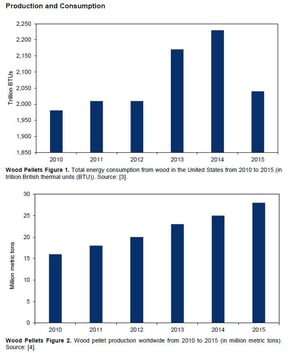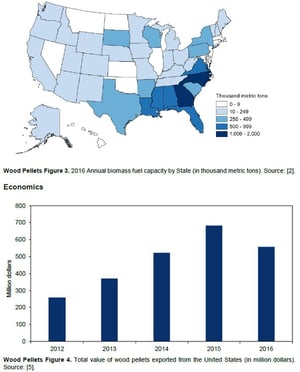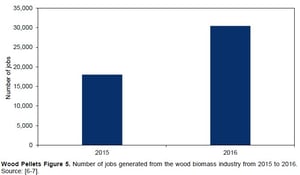4 min read
New USDA Data Explores Values, Trends of Family Forest Owners
John Greene
:
June 29, 2016

The millions of forestland owners across America—from institutional investors to small families and individuals—maintain their ownership in these lands for a variety of reasons. For example, Real Estate Investment Trusts (REITs) generally focus on acquiring vast acreages of forestland and operate with the philosophy of generating annual income through the sale of both land and timber. Similar to REITs, Timber Investment Management Organizations (TIMOs) also generally acquire large tracts of forestland, but operate with a philosophy of generating long-term investment income; the primary focus is on a financial gain that is realized at the time the land and timber are sold, which could be years or decades. Federal and state government agencies also own large tracts of forestland throughout the country, which are primarily maintained for timber harvesting, recreation and the preservation of wildlife.
While these ownership entities together own a large chunk of America’s unique forestlands, family forest owners are the single largest ownership group in the country. Currently, there are 10.7 million families, individuals, trusts, and estates that are collectively referred to as family forest owners throughout the US and together, these owners control 286 million acres of forestland, or 36 percent of the nation's total forestland. (The federal government is the nation's second largest forestland owner with 31 percent.)
Between 2011 and 2013, 8,576 randomly selected family forest ownerships with at least 10 acres of forestland participated in the US Department of Agriculture Forest Service National Woodland Owner Survey (NWOS), which provides information on the characteristics, attitudes, and behaviors of these ownerships.
Per the compiled study criteria, a family forest ownership is a legal entity that is composed of one or more individuals. Among the estimated 4 million family forest ownerships with 10+ acres of forestland, there are an estimated 9.7 million owners. An estimated 31 percent of the ownerships are composed of a single owner, 58 percent have two owners, and 11 percent have three or more owners.

Source: US Department of Agriculture Forest Service National Woodland Owner Survey (NWOS)
The study, titled "Family Forest Ownerships of the United States," provides valuable insights into many of the common forest ownership characteristics and trends, particularly when it comes to ownership types, patterns and demographics.
"If we are interested in the future of the forests of the United States, we must be interested in those who own the land and in particular this means family forest owners who own a plurality of this vital resource," said Tony Ferguson, Acting Director of the USDA Forest Service's Northern Research Station and the Forest Products Laboratory. "Forest Service research is demonstrating the importance of family forest owners to conservation and providing information that will make programs that serve family forest owners more effective."
Family Forest Ownership Patterns and Demographics
- Texas has the greatest total acreage of family forestland (42 million acres) and Rhode Island has the smallest (164,000 acres). In terms of percentage of a state’s forestland, Kansas has the highest (89 percent) and Nevada has the lowest (2 percent).
- On average, family forest owners (at least the primary decision makers) are older, more likely to be male, less racially diverse, and more educated than the general US population, as reported by the 2010 US Census (US Census Bureau 2012). The average age of the owner who is the primary decision maker for a family forest ownership is 62 years.
- Forty-three percent of the ownerships (with 48 percent of the land) have primary decision makers who are at least 65 years of age compared with the general US population of which 13 percent of the people are 65 or older. The primary decision makers are predominantly male (79 percent), white (95 percent), and non-Hispanic (99 percent) compared with 49 percent male, 72 percent white, and 84 percent non-Hispanic for the general US population.
- The family forest ownership primary decision makers tend to have attained a high level of formal education; 48 percent have a college degree, compared with 39 percent for the general US population. The annual income of family forest ownerships is similar to those of the average US household; 25 percent of the family forest ownerships report an annual household income of at least $100,000 compared with 23 percent for households across the United States.

Source: US Department of Agriculture Forest Service National Woodland Owner Survey (NWOS)
Family Forest Ownership Activities and Objectives
Survey results show that the benefits family forest owners most value are related to the beauty and privacy the forests provide, along with wildlife and nature protection. Financial objectives, such as land investment and timber production, are dominant objectives for far fewer family forest owners. This does not mean they are inactive on their lands; nearly half of the timber harvested in the US comes from family forest lands, but only 13 percent of family forest owners have written forest management plans and only 20 percent had received professional forestry advice at the time of the survey.
- For more than 70 percent of the family forest ownerships across the United States, one or more of the activities listed in chart below have occurred on their land in the preceding 5 years. The most common activity is harvesting for personal use, mostly firewood. Given that the activities listed are just for the previous 5 years, it is not surprising that longer time-frame activities, such as commercial timber harvesting, are much less common.
- When asked if they have commercially harvested trees anytime during their ownership tenure, the percentage increases from 18 to 29 percent. Although activities are occurring on the lands of many family forest ownerships, most are not involved in traditional forest management activities and programs.

Source: US Department of Agriculture Forest Service National Woodland Owner Survey (NWOS)
Family Forest Ownership Considerations for the Future
With 1 in 5 acres of family forest land owned by people who are at least 75 years or older, and even more acres owned by people who are between 65 and 74 years of age, the question of who will own forests and what they will do with those lands in the future is significant for forest owners as well as land managers and communities.
Similar to past activities, more than 70 percent of the family forest ownerships across the United States are likely or very likely to have one or more of the 11 listed activities listed in the chart below occur on their land in the next five years. The largest shift compared to past activities is the increased percentage of ownerships planning to improve wildlife habitat.

Source: US Department of Agriculture Forest Service National Woodland Owner Survey (NWOS)
The study’s results have important implications for the design and implementation of forestry policies, programs, and services and for a general understanding of those who own America’s forests. Most owners want to be active stewards of their forestlands, but most are not currently participating in either traditional landowner assistance programs or carbon sequestration programs. The effectiveness of these programs will likely increase with more ownership data regarding objectives, increased emphasis on intergenerational transfer of land, and a focus on traditionally overlooked owners such as women.
"Family forest owners have a great, great love of their land and almost all of them want to do what is right by the land," stated Brett Butler, a research forester with the Forest Service's Forest Inventory & Analysis Program and the study's lead author. "We hope this work will increase the public's awareness of the importance of family forest owners and be used to create educational materials and programs that allow landowners to make fully informed decisions to better meet their needs and the needs of future generations."





